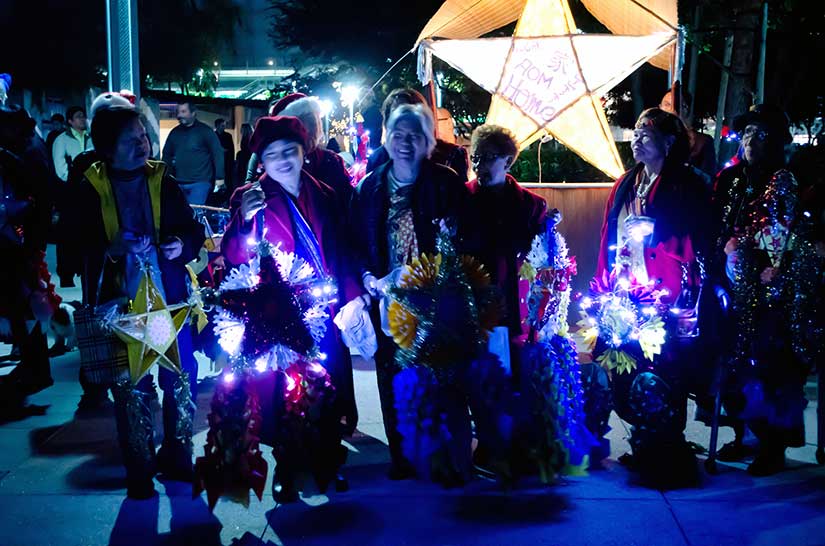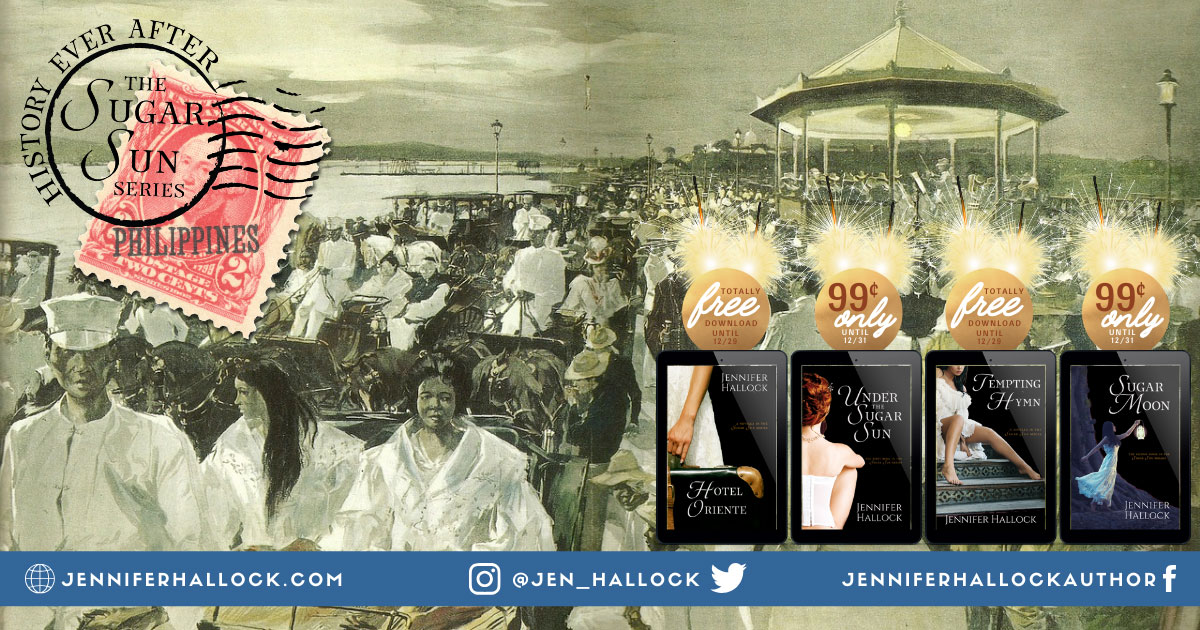
Want to know more before you click? Read more about the series and what people are saying about it.

Want to know more before you click? Read more about the series and what people are saying about it.
Mr. Hallock and I have a tradition we created our first year of marriage: pizza for Christmas. We spent the 1998 holiday in West Beirut, then our home. Since our neighborhood was predominantly Muslim, everything was open! (Also, the Lebanese knew that Santa can sell anything. For example, our local manousheh joint, Faysal’s, dressed an employee in a perfect jolly red suit and handed out chocolates.) Stephen and I were not big chefs or bakers yet (well, I’m still not), so we were hardly going to make a big dinner for two. We did the obvious thing: we ordered a pizza. Not obvious to you? As we sat and scarfed down a great New York-style pepperoni and mushroom pie, we decided we would always have pizza (or something styled after pizza) for Christmas. We have not broken that tradition in 20 years. There is dough resting on the kitchen table as I type…
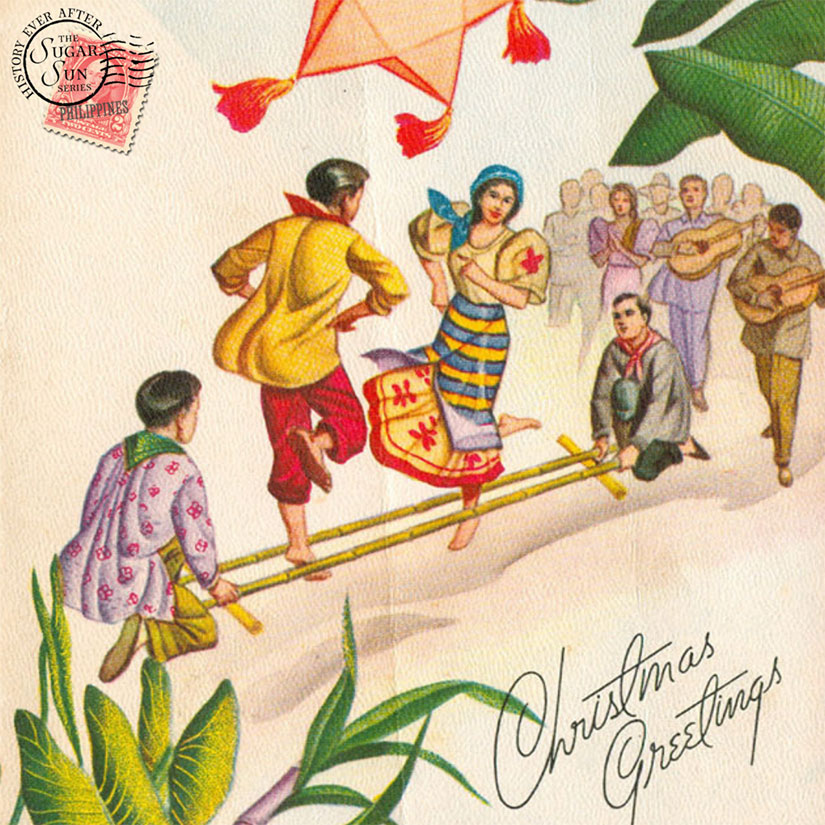
The holidays have also been about our nuclear family, i.e. our dog(s). We sadly said goodbye to seventeen-year-old Jaya two years ago, and before that to fifteen-year-old Grover. This is our first Christmas with a little pipsqueak called Wile E. Dog. Her auntie and uncle brought her pigs’ ears, so she’s been just fine with the madness of the holidays.
And, yes, we have a parol—adjusted to 110v by our amazing Ate Edith! We give passing traffic seizures, but, hey, it’s festive.
Finally, one of my favorite holiday traditions: good funky Christmas music. My favorite funk? Bootsy Collin’s Christmas is 4 Ever.
One thing you will have to do without this season is Sugar Moon. It is still coming soon, but rewrites are thorough and ongoing. We are hoping for early 2019, certainly in the first half of the year. [Updated to add: We actually managed this deadline, and Sugar Moon hit ebook shelves in April 2019. Read more about the history behind this book and what readers thought.] If you want something Christmas-y, also please check out the epilogue of my latest novella, Tempting Hymn, or the Noche Buena scene of Under the Sugar Sun. Merry, merry.
At long last, an alphabetical listing of the Sugar Sun glossary terms. Simply click on the graphic of your choice to open the annotated post in a new window. This list will be updated to include new terms as their posts are written.
I hope the posts are helpful in rounding out the historical context of the Sugar Sun series. If you have any suggestions or comments, please contact me through one of the methods to the left of this page.
An hour later they safely stumbled into a cluster of chromatic light. Georgie wondered if she had fallen under some kind of enchantment….Surrounding the church were hundreds of colorful star-shaped lanterns hanging off white-blossomed frangipani trees. Georgie stood frozen in place, overwhelmed by the feeling that she had entered a secret village of wood sprites.
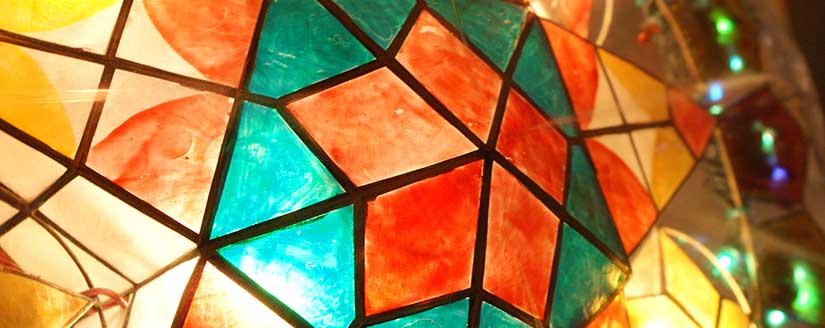
Want to know a secret? This passage is wrong. Sort of. Maybe.
One thing is right. Those “colorful star-shaped lanterns” are the ubiquitous symbol of Christmas in the Philippines: parols. They are everywhere: on houses, in malls, along highways, and—their original purpose—lighting the path to church. The original star design was reminiscent of the Nativity story:
After they had heard the king, they went on their way, and the star they had seen in the east went ahead of them until it stopped over the place where the child was. When they saw the star, they were overjoyed. (Matthew 2:9-10)
I am still overjoyed when I see a parol. In fact, so much so that I brought one back with me, and it may be the only one of its kind in rural New Hampshire. And, okay, that’s fine—we live in a globalized world these days—but would Hacienda Altarejos really have had a parol or two in 1902? Eh, close enough. The parol—from the Spanish farol for lantern—did originate in Spanish times, so that’s good for my timing. It even seems that the Mexican piñata got jumbled in the origin story somewhere, accounting for the bright colors of crepe paper or papel de Japon (Japanese rice paper). But I think they looked a lot different, more like the regular lanterns they were named after.
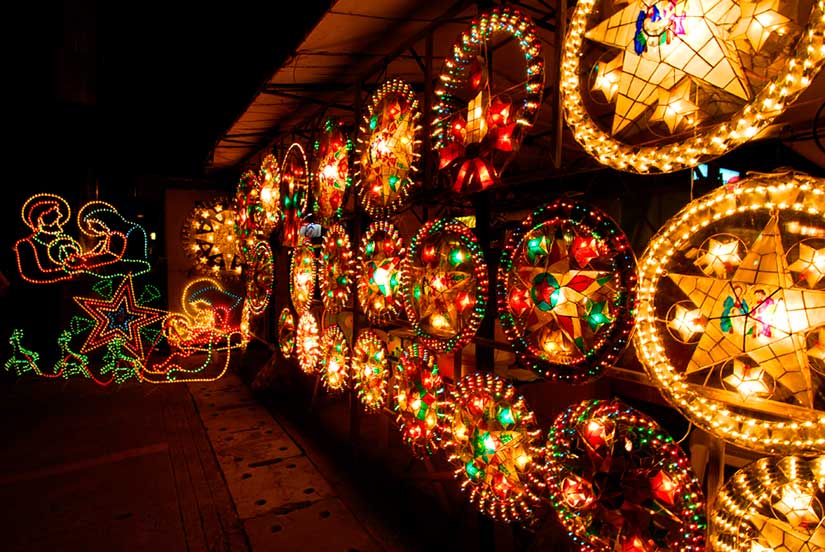
It was not until 1908—when a salt vendor in Pampanga named Francisco Estanislao slapped together some bamboo strips in festive shapes—that the tradition we know today was born. And, if Estanislao did not invent this “real” parol until 1908, and he was all the way up in Luzon, wouldn’t it have taken a few years for the tradition to spread to the island of Negros, where my story takes place? Okay, so I was a little off. But no one has called my bluff—yet. I think this is because to anyone in the islands, the Christmas season requires parols. I would have gotten flack if I had forgotten them!
Parols today do light the way to mass…and the way to Starbuck’s, too. Whatever gods ye worship, people! Back in the Edwardian era, the main light sources were candles or coconut oil lamps. These days there are at least three hundred tiny light bulbs in just a small parol. This is why mine had to be refitted for 110v before we shipped it back. (Thank you to Edith Rocha Tan for help on that!) Now, those three hundred lights give unsuspecting New England drivers fits as they drive by at night. Sweet.
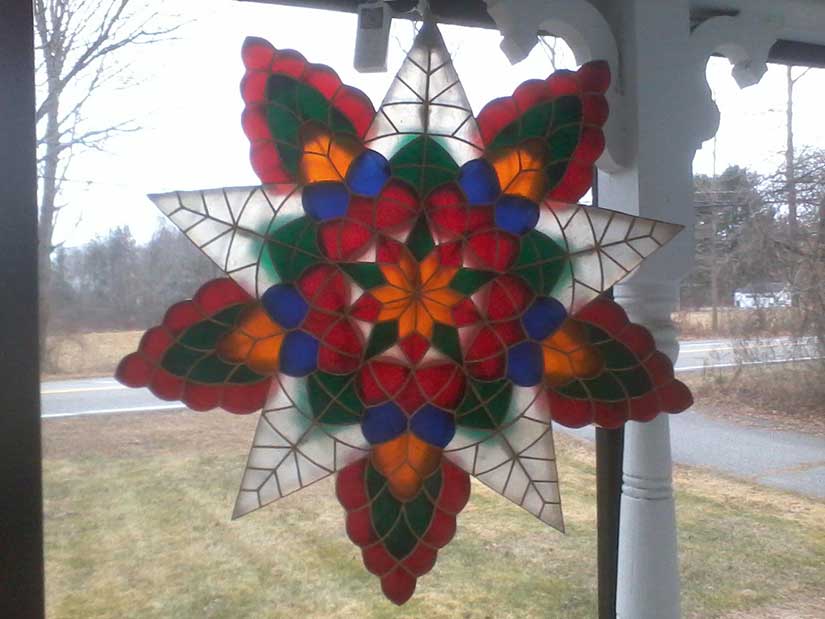
Fortunately, the art—and it is an art—of parol-making is still being passed down the Estanislao-David-Quiwa family:
When we were kids, my brothers and I would play with our toy trucks and attach our own parol drawings on cardboard, simulating the position the way the real arrangements of actual giant lantern festival entries were supposed to be during competitions. We simulated a mini-competition in our home and let our tatang [father] judge who among the siblings had the best design.
The giant lantern competition Arvin Quiwa was emulating is Ligligan Parul in San Fernando, Pampanga, which takes place the week before Christmas. And there are similar competitions and displays all around the greater Pinoy diaspora. I’m telling you: it’s not Pasko without a parol, no matter where you are. Maligayang Pasko! (Or Malipayong Pasko! in Cebuano.)
